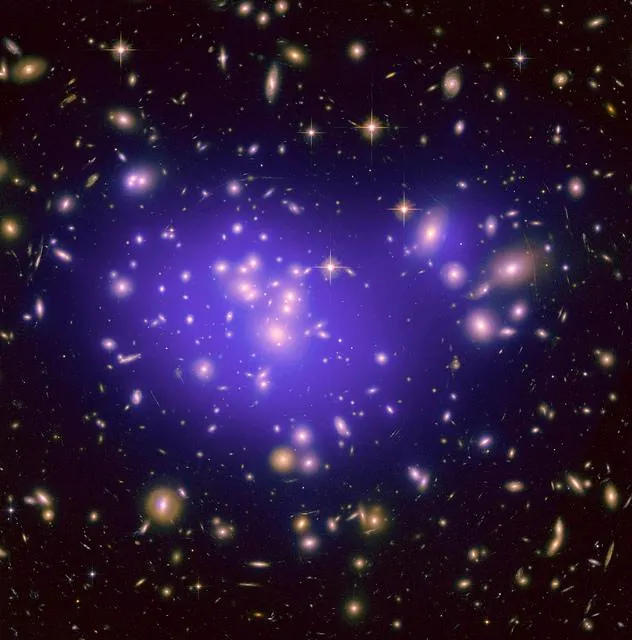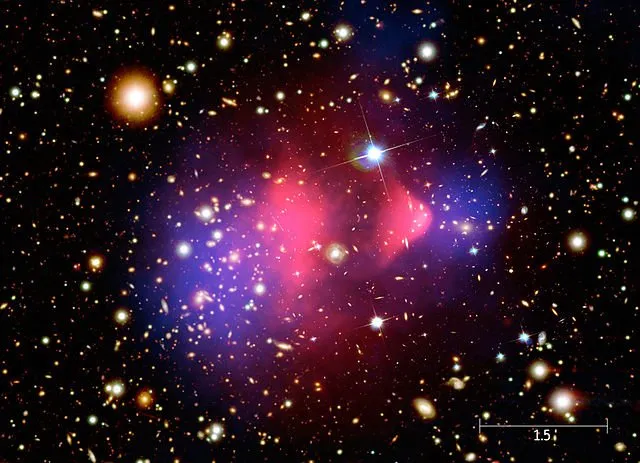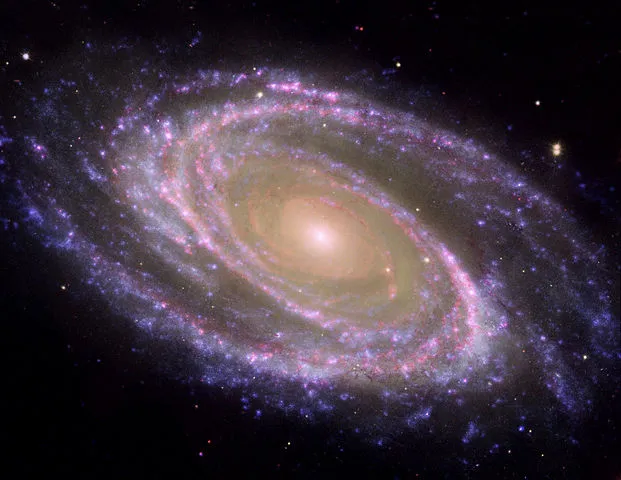An interesting question was asked on StemQ a week ago, addressing the possibility for massive objects like stars (and in particular like the sun) or other heavier systems to contain a substantial amount of dark matter.
 [image credits: NASA/ESA (CC BY 2.0)]
[image credits: NASA/ESA (CC BY 2.0)] To make a long story short: yes, the sun or any system can in principle contain some amount of dark matter.
However, depending on the system, this amount can be or cannot be substantial.
For a star like the sun, it is not large.
However, for a system like a galaxy that is much larger, we can have a lot of dark matter around there. Some galaxies, called ultra diffuse galaxies] are even made almost entirely of dark matter (up to 99%).
Let us however focus on the amount of dark matter that lies close to us (i.e. in the sun and its surroundings) for the sake of the example.
THE ORIGINS OF DARK MATTER
Dark matter lies at the heart of modern particle physics and astrophysics, both theoretically and experimentally.
As the exact nature of dark matter is unknown, theorists have on the one hand access to a huge playground to design models explaining cosmology. For the same reason, experimentalists run on the other hand plenty of experiments trying to detect dark matter directly, indirectly (though cosmic ray production) and at colliders.

[image credits: NASA (public domain)]
This interest on dark matter is not totally random. Initially, dark matter has been proposed by Zwicky in the 1930s to explain the motion of stars in distant galaxies.
By making use of classical mechanics (the gravitation laws of Newton) and the observed amount of visible matter, the stars were apparently not moving right.
In order to restore agreement between data and theory, the idea of Zwicky was pretty simple: adding some invisible mass where needed.
This invisible mass consists in the substance that is traditionally called dark matter today.
Of course, this is not the only way to restore the agreement between data and theory. The other option would be to modify how gravity works. While not excluded, this option is not as convincing as the dark matter one. However, as long as a model is alive (i.e. not excluded), it is interesting and deserves being studied.
MORE MOTIVATION FOR DARK MATTER - A COUPLE OF EXAMPLES
We are now almost a century later after the first proposal of dark matter and it turns out that dark matter does much more than just explaining the motion of stars in the galaxies.
It explains for instance gravitational lensing that is predicted by general relativity.
 [image credits: NASA/ESA (Public domain)]
[image credits: NASA/ESA (Public domain)] Light travels the universe following the shortest possible path between its origin and its destination.
This path however strongly depends on the amount of (visible or dark) matter present on the way.
Large amounts of matter indeed distort space time, as stated by general relativity.
This spacetime distortion then causes light to follow a bended trajectory.
In other words, a straight line is now bended. On Earth, we can study how light is bended by observing the universe, and hence indirectly come back to the cause of this bending. It turns out that much of the bending is caused by something invisible, i.e. dark matter.
As a second example of the very nice properties of dark matter (there are more but I picked two I really like), we can discuss the cosmic microwave background.

[image credits: WMAP @ NASA (public domain)]
The cosmic microwave background is the fossil radiation left over from the big bang and pervading the entire universe. It is almost a perfect black body radiation, with very small variations.
These variations (called the cosmic microwave background anisotropies) can be measured and one obtains the map in the picture on the right.
From this map and confronting it to theory predictions, one ends up by concluding that dark matter has to be there in a substantial amount.
DARK MATTER AND GALAXY FORMATION
And now the important point to answer the initial question of @irelandscape. Dark matter is a key ingredient to explain the formation of the galaxies.
 [image credits: NASA/ESA (Public domain)]
[image credits: NASA/ESA (Public domain)] At the beginning of its history, the universe was a uniform soup.
At some point perturbations appeared and consisted in the seeds for star formation, and to a larger extend to the formation of galaxies and clusters of galaxies.
This can be simulated and confronted to the present structure of the universe, so that these structure formation simulations provide interesting information on cosmology and how cosmological models could work (and could not work).
In particular, structure formation tells us that dark matter must be there as a major component of these seeds for structure formation. Without dark matter, we would simply not have the galaxy structure that is observed today.
The results of these simulations moreover provide interesting information on how dark matter has to be distributed in the universe.
A SPECIAL CASE: THE LOCAL DARK MATTER DENSITY
Let us now focus on one very specific example: the amount of dark matter in a small volume around the sun. This is what is called the local dark matter density.

[image credits: NASA/ESa (public domain)]
First, by local, we mean a few hundreds of parsecs around the sun. In kilometers, this consists in something of the order of 1014 kiliometers.
We are indeed in the domain of cosmology and astrophysics: small distances may be incredibly large for the tiny humans we are….
It turns out that the density of dark matter is not zero, and it is even kind of large. In a volume 1027 cubic meters, or the volume of the sun, one should find more or less 1000 tons of dark matter.
Of course, at the astrophysical level, this is a small number. The sun weights in contrast 2 x 1027 tons.
The nice point is that physicists can use this information to constrain dark matter models and get information on what it could be or could not be. There is some dark matter inside the sun that should give rise to observable signals that could be used as constraints on models. But this will be the topic of my next post, this one being already long enough ;)
SUMMARY - TAKE-HOME MESSAGE
In this post, I tried to answer to the question of the amount of dark matter contained in our solar system. I first reviewed briefly how dark matter was invented, i.e. to explain the motion of stars in distant galaxies. I have then discussed a few extra features (among many) of dark matter and how the dark matter hypothesis was reinforced by measurements in the fossil radiation left over from the big bang (the cosmic microwave background), gravitational lensing and the formation of the large-scale structures in our universe.this is
In particular, simulations of galaxy formation indicate that we should have a non-negligible amount of dark matter locally (by local, one means a few millions of millions of kilometers around the sun).
So the answer of question is yes, we have some dark matter inside the sun and in or solar system.
This amount is however far from being substantial. We have roughly 1000 tons of dark matter in the sun, which contributes to 0.0000000000000000000001% of the mass of the sun.
In a next post, I will give details on how physicist can use this information, and this tiny proportion of dark matter inside the sun, to constrain models of dark matter.
STEEMSTEM
SteemSTEM aims to make Steem a better place for Science, Technology, Engineering and Mathematics (STEM). For more information about the SteemSTEM project, feel free to follow @steemstem, have a look to the last news from the project, check out our new app or read our latest distilled.
Please consider to support the project by voting for the SteemSTEM Witness (@stem.witness) or delegating to @steemstem for a ROI of 65% of our curation rewards (quick delegation links: 50SP | 100SP | 500SP | 1000SP | 5000SP | 10000SP).
We are on our way to make Steem a crucial medium for science communication, and it is still time to contribute to this effort!
StemQ Notice: This post was originally submitted on StemQ.io, a Q&A application for STEM subjects powered by the Steem blockchain.